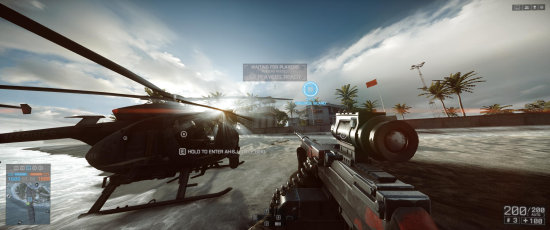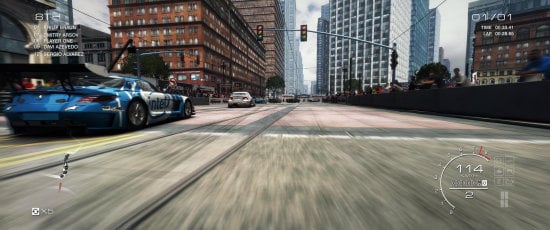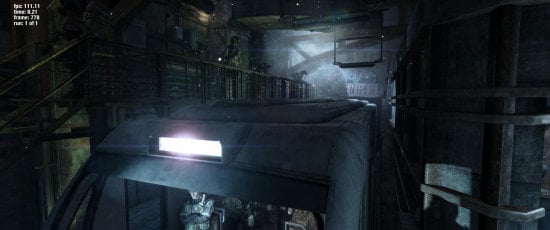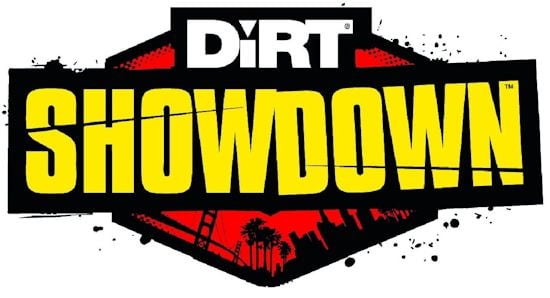Introduction
When I first started hearing about the new GeForce GTX 960 from NVIDIA, I wondered how the cards would perform in SLI. At first, the 128-bit memory bus worried me, so did the 2GB of VRAM. But during our first review of the ZOTAC GeForce GTX 960 AMP! Edition, we saw that the 128-bit memory bus was definitely not holding back the mid-range GPU.

So what we did, was re-run all of our benchmarks; 1080p, 1440p and even 4K with two GeForce GTX 960s in SLI. The new GTX 960s can only be run in 2-way SLI, else we would've tried to have included some 3- and 4-way numbers. But still, two of these mid-range $199-$209 video cards have some damn impressive performance numbers.
I did some light reading across the Internet over the weekend looking at SLI numbers, and while people have a good point as to 'why would you SLI the GTX 960s together' it's all part of the fun. You can find our final thoughts at the end - there are some very surprising results that you're going to want to see, so let's dive right into it.

For our SLI testing, we used the ZOTAC GeForce GTX 960 AMP! Edition and the MSI GeForce GTX 960 GAMING 2G OC video cards. Everything else stays the same, but we had to tweak the clock speeds on our cards to match them together as there's a 50MHz Base Clock speed difference between them. Once they were matched together, we kicked things off.
PRICING: You can find the Zotac GeForce GTX 960 AMP! Edition 2GB for sale below. The prices listed are valid at the time of writing but can change at any time. Click the link to see the very latest pricing for the best deal.
United States: The Zotac GeForce GTX 960 AMP! Edition 2GB retails for $229.00 at Amazon.
Testing Method & Test System Configuration
Note - Lack of Video Cards

Because I'm only just starting out as TweakTown's Video Card Editor, I don't have a slew of GPUs to test with as yet. As our reviews of the GeForce GTX 960s continue into the coming weeks, I have other GPUs on the way. I can then throw in some numbers from AMD Radeon cards - but for now, we're only looking at the GeForce GTX 780 and GTX 980 both in reference form directly from NVIDIA, with our GTX 960 cards in SLI being from MSI and ZOTAC.
Testing Method
Because I'm just starting out reviewing GPUs, we're going to slowly evolve our benchmarking setup. I'm not going to dive into the deep end and start testing out real-time FPS, as this will hurt the quality of the reviews. Instead, I'd like to nail these initial reviews and then we can start doing real-time numbers of games like Far Cry 4 and Star Citizen. However, I've played Battlefield 4 on a 64-player server to provide some real-world performance numbers.

For now, I'm going to be using the same suite of benchmarks I've been using on my Tweakipedia articles, which uses a mix of synthetic benchmarks with Futuremark's 3DMark and Unigine Heaven. After that, we have a bunch of titles with built-in benchmarks (which does not represent actual in-game performance), but they are repeatable for you at home to gauge the performance of your PC or video card.
Over time, I will be adding in new benchmarks and a new section that will concentrate solely on real-time gaming benchmarks. This will take more time per review, as I'll have to invest time into actually physically playing the games, but it'll be worth it in the long run. For now, let's get right into the synthetic benchmarks and see how two GeForce GTX 960s in SLI perform.
Something Different
Most people purchasing this card are only going to be gaming at up to 1080p, as the 128-bit memory bus and 2GB of VRAM is going to severely limit and hinder performance above that resolution. 2560x1440 (1440p) and 3840x2160 (4K) are going to be resolutions that this card won't be used for (mostly). That's not to say that you won't purchase this card for it, but I would highly recommend that people looking to buy any of the GeForce GTX 960s to only get one if you have a 1080p capable monitor, and plan to not upgrade for a while.
Test System Configuration
We only recently built our new X99-powered system, something you can read about here. As for the detailed specifications, this is what we're running:

- CPU: Intel Core i7 5820K processor w/Corsair H110 cooler
- Motherboard: GIGABYTE X99 Gaming G1 Wi-Fi
- RAM: 16GB Corsair Vengeance 2666MHz DDR4
- Storage: 240GB SanDisk Extreme II and 480GB SanDisk Extreme II
- Chassis: Lian Li T60 Pit Stop
- PSU: Corsair AX1200i digital PSU
- Software: Windows 7 Ultimate x64
- Drivers: GeForce 347.25

We're running the system at stock CPU speeds, which will provide more of a 'real-world' feel to our benchmarks. Sure, this isn't an i7-5960X at 5GHz, but what person is going to team up an incredibly expensive CPU with a mid-range GPU? Not many.
Our GPU tests are changing, shifting toward more of a real-world feel. But don't worry, we will be doing some crazy balls-to-the-wall tests that will see serious overclocks, Extreme Edition processors, and much more in the coming months. For the most part, we will be doing more real-world testing by teaming up the right processor with the right GPU in its price category.
Even still, most people would be running an LGA 1150 socket Core i5 or mid-range AMD FX-8350 with a GeForce GTX 960, so we're still giving it some better guts as a CPU.
Synthetic Benchmarks (3DMark and Heaven)
3DMark Fire Strike- 1080p


3DMark Fire Strike Extreme- 1440p

3DMark Fire Strike Ultra - 4K

Heaven - 1080p


Heaven - 1440p

Heaven - 4K

I knew the synthetic benchmarks would receive a huge boost from the additional GPU, but just how well did they scale in SLI? 3DMark's Fire Strike at 1080p was a massive success, jumping from a total score of 6796 on the single GTX 960 to a huge 11,050 on the GTX 960 SLI setup. Unigine's Heaven didn't scale as well, but we still have an impressive jump from the 50FPS average to 86FPS average.
Checking out the 1440p results, we can see that the scaling on 3DMark's Fire Strike Extreme benchmark wasn't as good as the 1080p run. The single GTX 960 scores 3468, while the SLI setup pushes out 5920. But still, close to twice the score. Heaven, on the other hand, really enjoyed the second GTX 960, moving from 29FPS average to 54FPS average.
How about 4K? Well, not so good. We see a total score of 1167 on the single GTX 960, while SLI actually hurts performance, dropping down to just 1070. Futuremark does warn users that they require 3GB of VRAM to run the test at 4K, so this is why we're seeing a reduction in performance, rather than an increase. The 2GB of VRAM isn't enough, and swapping between the two cards is obviously hurting the outcome.
In Heaven however, the SLI setup performs great. We see a great jump in the minimum FPS from 7.2 to 12.2, while the average of 12FPS on our single GTX 960 jumps to 23FPS in SLI at 4K.
Game Benchmarks (1080p)
Battlefield 4
This is one game that we did differently, as it does not feature a built-in benchmarking feature. When it comes to Battlefield 4, there are countless ways you can benchmark it. Some find a spot in the single player campaign which is easily repeatable, and use that. For our testing, we've chosen to use a 64-player online multiplayer server for real-time performance statistics.
We joined a 64-player map and played for five minutes using FRAPS, pulling our minimum/average and maximum FPS. We did this for each test, running 1080p at Medium/Ultra and then 1440p at Medium/Ultra, and once more at 4K - but for the 1440p and 4K tests, we disabled AA as it is quite stressful on the GPU at that resolution.


And again, this time with the Ultra preset.

GRID Autosport


Metro: Last Light


Middle-earth: Shadow of Mordor


Thief


Sniper Elite 3


Tomb Raider


BioShock Infinite


DiRT Showdown


Batman: Arkham Origins


You can find our performance summary of all of our gaming tests later in the review.
Game Benchmarks (1440p)
Battlefield 4



GRID Autosport


Metro: Last Light


Middle-earth: Shadow of Mordor

Thief


Sniper Elite 3


Tomb Raider


BioShock Infinite


DiRT Showdown


Batman: Arkham Origins


You can find our performance summary of all of our gaming tests later in the review.
Game Benchmarks (4K)
Battlefield 4



GRID Autosport


Metro: Last Light


Middle-earth: Shadow of Mordor


Thief


Sniper Elite 3


Tomb Raider


BioShock Infinite


DiRT Showdown


Batman: Arkham Origins


You can find our performance summary of all of our gaming tests later in the review.
Game Performance Summary
How We Judge Performance
The way we judge performance on video cards is changing now that I'm stationed in this position, as we're not going to sit here and judge a $199 card, or two of them in SLI for $400 at 4K. But, we will evaluate them at that resolution. Firstly, I wouldn't recommend GeForce GTX 960s in SLI anyway, but we'll get to that soon.
Any and all judgment on this SLI setup is going to come from the SLI scaling, overall performance, overall scaling at various resolutions, noise, price and power consumption.
Performance at 1080p
Starting with Battlefield 4, I didn't expect this level of performance. Our single ZOTAC GeForce GTX 960 AMP! Edition performed well for the most part, where on the Ultra preset (without AA enabled) we were seeing an average of 70FPS. Throwing another GTX 960 into the mix and enabling SLI saw this number jump by almost 100%, to a huge 127FPS average. This is an incredible level of scaling, for one of the best looking games on the PC right now.
GRID: Autosport and Metro: Last Light didn't see any additional performance. Thief received a huge performance increase, jumping from 42FPS on the single GTX 960 to a huge 76FPS in SLI. Sniper Elite 3 went from 93FPS to 139FPS, while Tomb Raider scaled from 55FPS to 88FPS. BioShock Infinite also jumped by a huge percentage, from 57FPS to a whopping 115FPS.
Performance at 1440p
The same great scaling in Battlefield 4 at 1920x1080 passes through to 2560x1440, where we start off with Battlefield 4 at Medium detail at 1440p. On the single GTX 960 we were seeing a great average of 86FPS, but in SLI we jump right up to a huge 153FPS. On the Ultra preset, the same performance jump is seen as we move from 59FPS to 113FPS average. Massive results, something that you simply can't complain about here with two GTX 960s in SLI.
We may not have seen much SLI scaling at 1080p in Metro: Last Light, but at 1440p we jump from 35FPS average to 55FPS. Shadow of Mordor sees a nice increase from 27FPS to 39FPS, while BioShock Infinite leaps from 46FPS to 82FPS. DiRT Showdown speeds up from 70FPS average to a huge 115FPS, too.
Performance at 4K
Performance at 4K with the two GeForce GTX 960s in SLI is something I knew would be hard, but we did it anyway. Going through our suite of benchmarks, we see some great scaling, but for the most part, the additional performance really falls off a cliff, as does the reasoning behind getting another GTX 960 if you're gaming at 4K.
Starting with Battlefield 4 on its Medium preset, we have 51FPS on our single GTX 960, while the SLI setup boosts it up to 83FPS. This is great at 4K, as you're getting over that magic 60FPS mark. For $400, these two GPUs kick some serious ass at 4K and BF4. Turning up the detail to Ultra (again, with AA disabled), we see an average of 44FPS on our single GTX 960, while the second GTX 960 sees 55FPS average. Not so good when the details are cranked.
GRID: Autosport on Ultra scales well, from 42FPS on the single GTX 960 to 55FPS, while Metro: Last Light jumps from 31FPS to 41FPS. Shadow of Mordor is quickly becoming the most stressful game on our benchmarking lineup, with 28FPS on the single card and 44FPS with SLI - a nice improvement. Sniper Elite 3 enjoys SLI with 37FPS on the single GTX 960 and a huge 59FPS on SLI. BioShock Infinite enjoys the second card, jumping from 39FPS to 60FPS while DiRT Showdown slides from 38FPS to 63FPS.
Power Consumption and Sound Testing
Power Consumption
We already found out on the single GeForce GTX 960 that total system power consumption was under 235W, with the card itself drawing only 120W total. Two GTX 960s in SLI should consume more, so I was expecting around 120W or so more (plus or minus 20-40W) for everything else.

As you can see, the GeForce GTX 960s in SLI draw a total of 370W during our most intense Battlefield 4 testing at 4K. This is compared to the 235W of the single GTX 960, the 300W of the GTX 780 and the GTX 980 only consuming 280W.
Sound Testing
Sadly sound testing was not available for this review, but it will be added soon for future reviews.
Final Thoughts
Starting the adventure off in the world of GeForce GTX 960s in SLI, I asked myself one question: is it worth it? Simple answer: No. There are circumstances where I would recommend GTX 960s in SLI, so let's use that to start off.

If you wanted to upgrade your system right now, and had an SLI capable motherboard, but didn't want to spend $400+ on a GTX 970, then yes. The GTX 960 is definitely the card you should be buying right now. It's priced very competitively at $199, makes next to no noise most of the time and has a TDP of just 120W.
But two of them in SLI? It's a great upgrade path - so if you were the same consumer I stated above, and had an SLI motherboard, but didn't want to spend the money right now on a GTX 970, the upgrade path is great. Another 6-8 months from now these cards will most likely drop in price, and even less second hand. This means for around $120 (or so, roughly), you could pick a second GTX 960 up for some SLI action.
This is where the value is great, in picking a second one up (new or second hand) in the future. So you'd be spending $200 now, and let's say $100 toward the holidays. This is a cheaper option than dumping down $400+ now on a GTX 970, but it keeps your options open in the future. Normally I wouldn't recommend purchasing two mid-range cards in SLI, but the upgrade path here is very clear.

At 1080p on my 144Hz G-SYNC enabled ASUS ROG Swift PG278Q monitor, I was gaming at an average of 127FPS in Battlefield 4 with Ultra details. Turning it down to Medium and cranking the resolution up to the native resolution of my screen, 2560x1440 (1440p), I was enjoying it even more with an average of 153FPS. This really surprised me, the level of scaling with two mid-range cards in SLI from BF4.
But would you buy two cards in SLI right off the bat? No, no you wouldn't. You would get yourself a GTX 970 or GTX 980 and have an even bigger upgrade path of grabbing another high-end GPU for SLI if money permits down the track. But, starting off with a single card and having the option of a second, cheaper and possibly second hand GTX 960 gives budget gamers a great upgrade path.
Less than 370W total system power consumption, next to no noise and great scaling at 1080p and 1440p. Mid-range just got a whole lot more awesome. GTX 960s in SLI put simply, kick ass.
PRICING: You can find the Zotac GeForce GTX 960 AMP! Edition 2GB for sale below. The prices listed are valid at the time of writing but can change at any time. Click the link to see the very latest pricing for the best deal.
United States: The Zotac GeForce GTX 960 AMP! Edition 2GB retails for $229.00 at Amazon.


 United
States: Find other tech and computer products like this
over at
United
States: Find other tech and computer products like this
over at  United
Kingdom: Find other tech and computer products like this
over at
United
Kingdom: Find other tech and computer products like this
over at  Australia:
Find other tech and computer products like this over at
Australia:
Find other tech and computer products like this over at  Canada:
Find other tech and computer products like this over at
Canada:
Find other tech and computer products like this over at  Deutschland:
Finde andere Technik- und Computerprodukte wie dieses auf
Deutschland:
Finde andere Technik- und Computerprodukte wie dieses auf